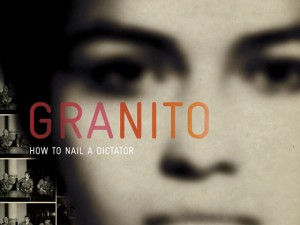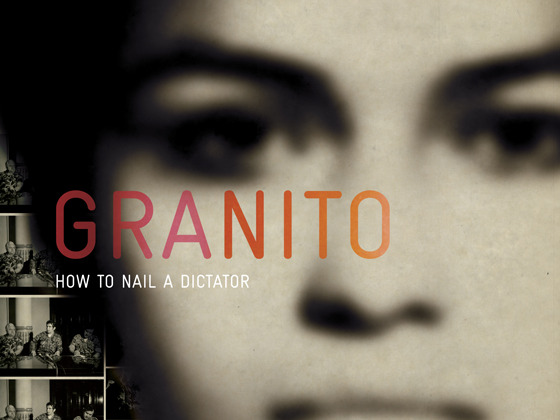[written by Emily Tamfo]
It’s not surprising that in recent years, film seems to be one of the most effective means of conveying provocative topics such as genocide (Hotel Rwanda is but one example). Not only does film have the unique ability to captivate an audience for long periods, but they can also be drawn in through the spectacle of cinema; both visually and emotionally, audiences can participate in the stories depicted on screen, creating a bond between the story and the audience that no other media could replicate. Pamela Yates’s Granito: How to Nail a Dictator seems to do just that – through this documentary she tells the story of five people who experienced the Guatemalan genocide firsthand and in doing so helps us, as viewers, experience it as well.

Granito follows five people from various walks of life: a documentary filmmaker, a forensic anthropologist, an international lawyer, a Maya survivor, and a Nobel Peace Prize laureate. Each person brings their unique perspectives to the film — their emotions, their memories, their pain — but most of all, they bring their passion for correcting the injustices they have witnessed. Their zeal comes from an insatiable need to prosecute the political leaders responsible for the death of over 200,000 of the Maya people – leaders who have since lived their lives with impunity.
A central theme throughout Granito is the idea of the media as bearing witness to these atrocities. Yates herself is featured in the film, as she uses footage from her time documenting the military in 1982. Bringing former dictators to justice is difficult enough under an authoritarian regime but without concrete evidence of their crimes, it is virtually impossible and their crimes go unpunished. The footage displayed in the film is the only known evidence remaining from the years of human rights abuses inflicted on the Maya people from military armed forces – from this, it’s easy to see how the Sentinel Project was attracted to this film. The video footage, however basic it may seem by today’s standards, was still the only medium through which the devastation of the Maya people could be concretely proven to the outside world. Without it, the Maya people would have suffered in complete silence, unable to fully communicate what happened and thus leaving no one accountable for the many lives lost. Granito makes one wonder, if one video camera could play such a pivotal role in documenting a 30-year-old genocide then what can the technologies that the Sentinel Project seeks to use today do for prevention and justice?
The Sentinel Project, in partnership with Human Rights Watch, is proud to present Granito, one of 10 films in the Human Rights Watch Film Festival. In addition to Guatemala, this festival includes stories from regions such as Kenya, Iran and Burma, with topics ranging from education to human trafficking. Join us on March 8th as we watch Granito and celebrate this film as a means of both uniting us and educating us about the realities of our world.
Check out granitofilm.com or TIFF for more information.
See you all there!

